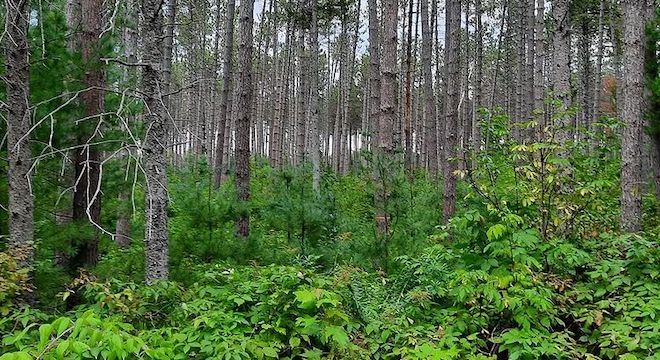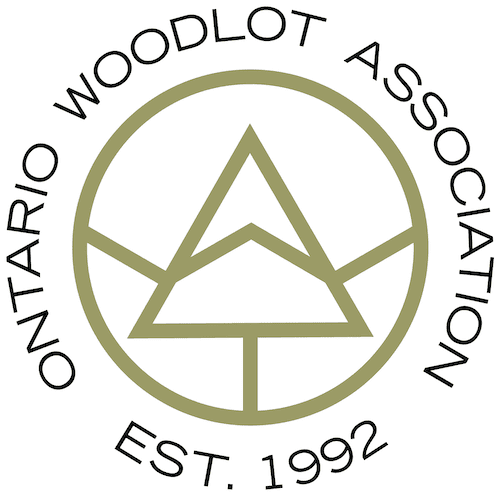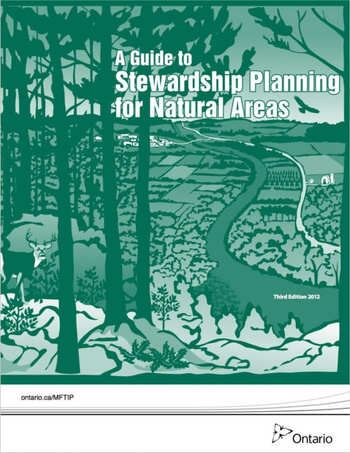Managed forest properties are assessed in a manner similar to the method used for farmland, which is based on land bands and soil classification. This assessment approach is called the farm-forest proxy. The farm-forest proxy reflects sales data from wooded portions of farms within a geographic area, based on site productivity (e.g., soil quality, drainage, mineral composition, etc.) and forms the basis for the assessment of land in the Managed Forest property class. The assessment methodology also includes an assessment “cap” and “floor;” see details below.

Many woodlot owners, particularly those in the Managed Forest Tax Incentive Program (MFTIP), often wonder how their assessments were calculated. And it seems that when talking about property assessment, it is never simply a “black and white” explanation.
Hopefully, this article will shed some light on how managed forest properties are assessed. It is intended to serve as a refresher for everyone on MPAC’s assessment methodology, which was implemented in 2006 as part of enhancements to the MFTIP program.
First, let’s look at the main overriding principles of how managed forest (MF) properties are assessed.
The approach to assessing managed forests
What is an assessment cap and why is it necessary?
An assessment cap was created because data analysis indicated that the farm-forest proxy assessment approach could result in an increase in property assessment for some properties entering MFTIP (many of these properties are in Northern Ontario). Even though these MF properties would be afforded a reduction in the tax rate, it is recognized that there could be potential stewardship impacts if the assessed property value increased when a property was entered into the MFTIP. The assessment cap ensures that a property does not experience an increase in its assessed value when entering the MFTIP. It is believed that with the implementation of a cap, the farm-forest proxy assessment approach will work in all areas of the province.
What is an assessment floor?
The assessment floor was introduced because in parts of the province some properties would see a significant reduction in their property assessment values under the farm-forest proxy assessment methodology. At the local municipal level this could be viewed as a significant loss of municipal revenues. To address this concern, a mechanism (the floor) was developed that would place a limit on how much a managed forest assessment could be reduced in relation to the property's assessment, if it was not in the MFTIP. The floor is set at 69%, meaning the assessed value of a MF property cannot be reduced more than 69% when entering the MFTIP.
Example: A 50-acre woodlot has a current value assessment (CVA) of $50,000 before entering MFTIP. After applying the farm-forest proxy ($224/acre) to the eligible managed forest area (50 acres), the assessed value was determined to be $11,000. Under the assessment floor the maximum reduction in the assessed value would be $34,500 ($50,000 x 69%), with the floor established at $15,500 ($50,000 – $34,500). Because the MF assessed value of $11,000 is lower than the maximum allowable reduction, the floor would apply to this property, and the assessment for the managed forest would be limited to $15,500.
How are waterfront properties assessed?
Eligible waterfront properties in the MFTIP are assessed using the same assessment approach used for all other properties in the program.
Tax rate for properties in the managed forest tax class
The tax rate for the managed forest property class (i.e., those eligible lands in the MFTIP program) is 25% of the municipal tax rate set for residential properties
Buildings in or near managed forest areas
Areas used for residential purposes (e.g., house, landscaped areas, cottage, hunting camp, etc.) are not eligible for the MFTIP. A minimum deduction of one acre (footprint) is deducted. For example, a forested 50-acre property with a house would have 49 acres of MFTIP-eligible area and one acre non-eligible (house and one-acre footprint). If the residential footprint is greater than one acre, then the larger area is deducted.
Determining the farm-forest proxy
The farm-forest proxy values are weighted averages based on the acreage and the value of farm woodlots in each soil class and reflects sales data on the wooded portions of farms within a geographic area. Agricultural lands have 6 soil classes, with 1 being the most productive and 6 being the least productive.
Table 1 provides an example of how the weighted average is used to calculate the farm-forest proxy for a given land band and municipality (e.g., the weighted average in this example is calculated to be $247/acre).
The 2008 farm-forest proxy values ($ values per acre) are regulated under the Assessment Act and updated annually for each municipality and land band. They can be viewed online by accessing the provincial government's e-laws web page (refer to the Assessment Act, 2001 Ontario Regulation 282/98, Part IX.1 – Table 1).

Table 1
Determining your managed forest assessment values
As noted in the introduction, when we are talking about property assessment it is never simply a “black and white” explanation. This definitely holds true when you are trying to determine your MF assessment when there is a residence on the property. However, for vacant MF properties (i.e., properties where there is no residence and the entire property is eligible for the MFTIP) the process is a little easier to understand.
First let’s look at the easy one — how to determine the assessment value of a vacant MF property. Table 2 outlines the steps in how the assessment of a 50-acre forested property, assuming that it is 100% eligible for the MFTIP, would be calculated.

Table 2
Unfortunately, determining the assessment of a managed forest property with a residence (or a property where not all of the land is eligible for MFTIP) is somewhat more complicated. The added complexity is apportioning a value to the residence or the ineligible MFTIP area. Although the methodology is outlined in legislation (Regulation 282/98, Section 32.1 and 32.2) Table 3 below will provide readers with a clearer step-by-step process how a 50-acre property (49 acres eligible for MFTIP) with a residence would be assessed.

Table 3
This article appeared in the Winter/Spring 2009 (Volume 54) edition of the S&W Report, the newsletter of the Ontario Woodlot Association.

